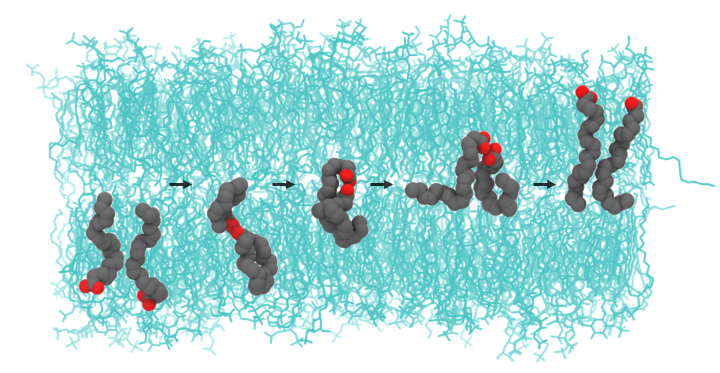In this manuscript, we present important findings on the transport of free protonated docosahexaenoic acid (DHAP) within a model a human brain lipid membrane and on the effect that DHAP has on the structural and dynamic properties of the membrane. We report the results of large-scale all-atom molecular dynamics simulations of the effect of the amount of DHAP adsorbing into a complex model of human brain lipid membranes, consistent with the lipid profile reported to have been found in healthy cells by Chen et al, J. Biol. Chem. (2012) 287, 2678-2688. Specifically, we have found that increasing the amount of DHAP within the membrane results in the membrane becoming increasingly disordered, increasingly fluid and as a result we observe an increased rate of DHAP flip-flop across the membrane. Additionally, we have used the machine learning approach called Density-Based Spatial Clustering of Applications with Noise (DBSCAN) to provide a detailed description of the molecular scale mechanisms which govern the flip-flop mechanism which results in the transport of the molecule across the membrane. In doing so, we have identified that no only do isolated molecules transport across the membrane but also hydrogen bonded pairs of DHAP molecules flip-flop together. Understanding the effects of various concentrations of DHAP on the dynamics within a lipid membrane and the resulting structural properties of the membrane are important when considering the use of DHAP as a dietary supplement or as a potential therapeutic,
Full reference: On the structure and flip-flop of free docosahexaenoic acid in a model human brain membrane. Sze May Yee & Christian D. Lorenz, Journal of Physical Chemistry B (2021) 125 (29), 8038-8047.

